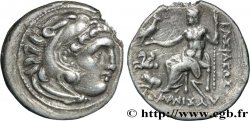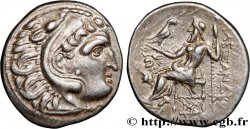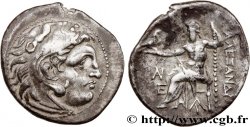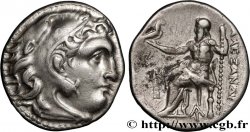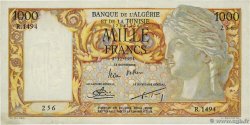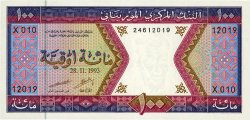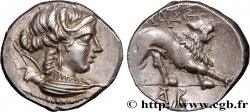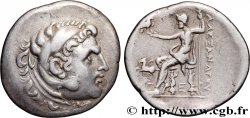正面
正面的文字 ANÉPIGRAPHE.
正面的说明书 Tête imberbe d'Héraklès à droite, coiffée de la léonté.
背面
背面的说明书 Zeus aétophore, les jambes croisées, assis à gauche sur un siège sans dossier, nu jusqu'à la ceinture, tenant un aigle posé sur sa main droite et un long sceptre bouleté de la gauche ; dans le champ à gauche une tête de lion surmontant un croissant tourné à gauche ; monogramme sous le siège.
背面铭文 ALEXANDROU / N
背面的翻译 (D’Alexandre).
历史细节
THRACE - THRACIAN KINGDOM - LYSIMACHOS
(323-281 BC)
Coinage in the name of Alexander III the Great type
Lysimachus (c. 360-281 BC) was one of Alexander's leading generals. After the death of the brilliant conqueror on June 14, 323 BC, a fratricidal fight opposed the Diadochi, his successors. Lysimachus, initially favorable to the survival of the Empire, supports Antipater before becoming independent in 315 before J. - C., receiving the administration of Thrace. In 306 BC, after the naval battle of Salamis in Cyprus, Lysimachus, imitating Antigonus the One-eyed, his irreducible enemy, took the title of king (Basileos), both followed by Demetrius, Ptolemy, Seleucus and Cassander. Allied with Ptolémée, they crush Antigone which dies with the battle of Ipsos in 301 before J. - C. It is the birth of the kingdom of Thrace and the beginning of the personal coinage of Lysimaque. He must fight against Demetrius in Macedonia and Thrace. After 288 BC, he remained the most powerful of the reigning monarchs over Europe and Asia Minor. Lysimachus, aged 80, was killed at the Battle of Couroupédion in 281 BC..










 对产品描述纠错
对产品描述纠错 打印
打印 分享我的选择
分享我的选择 提问
提问 Consign / sell
Consign / sell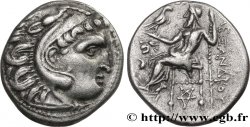
 产品介绍
产品介绍